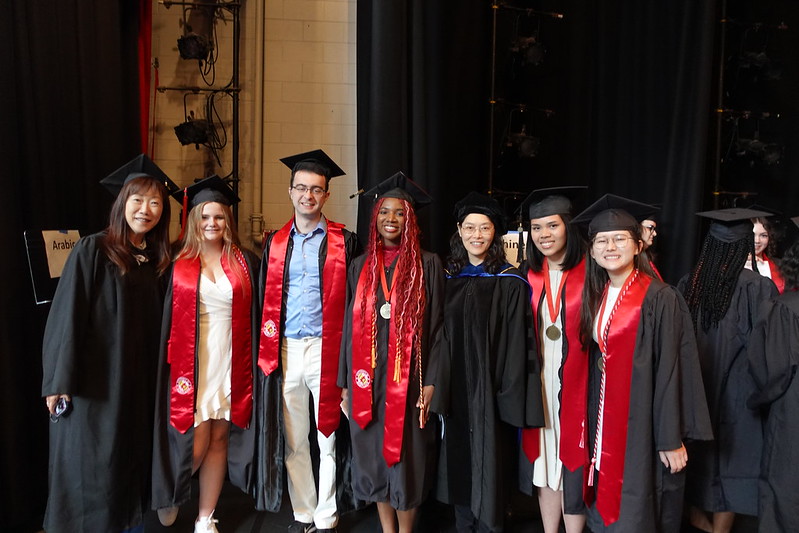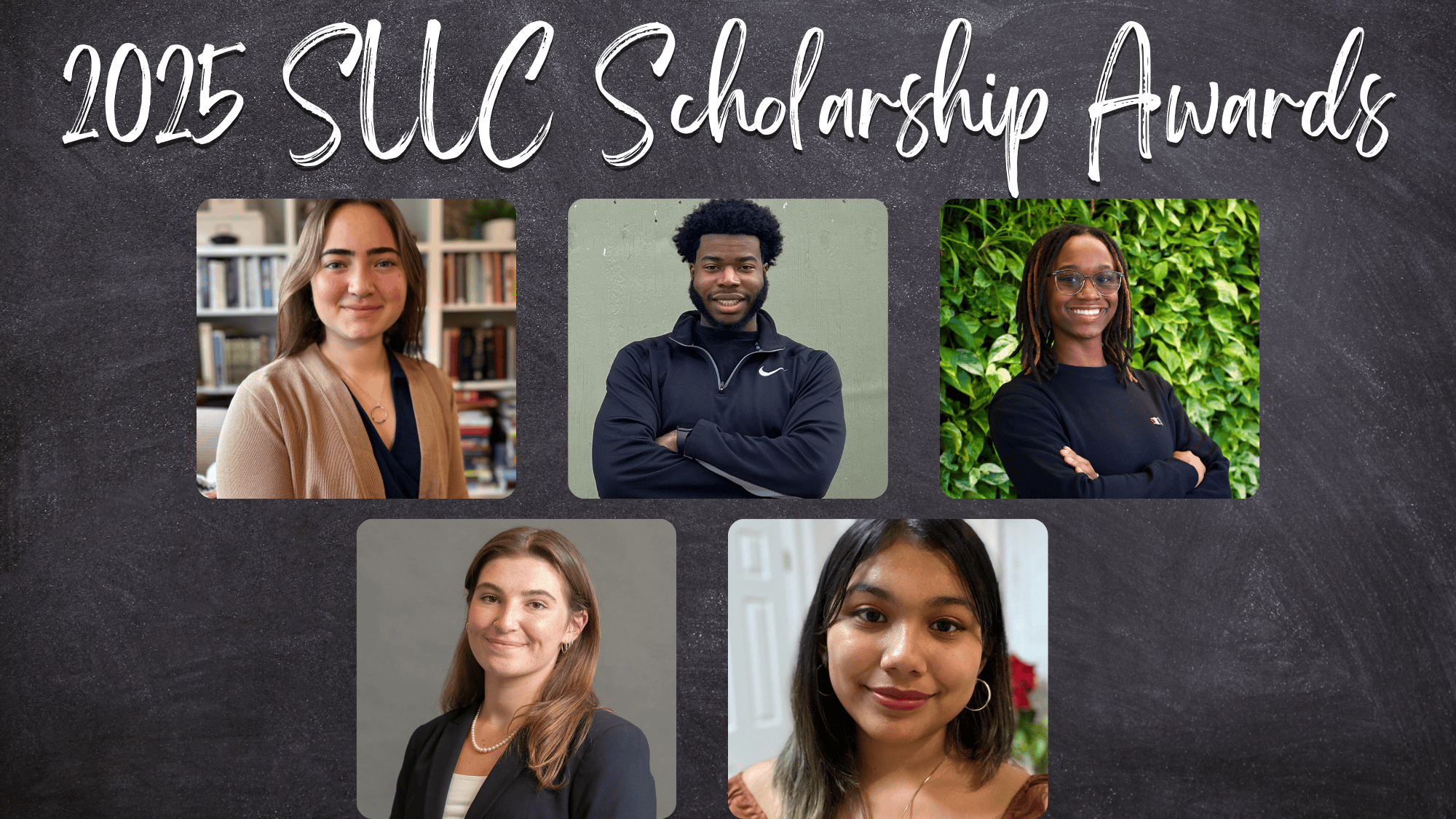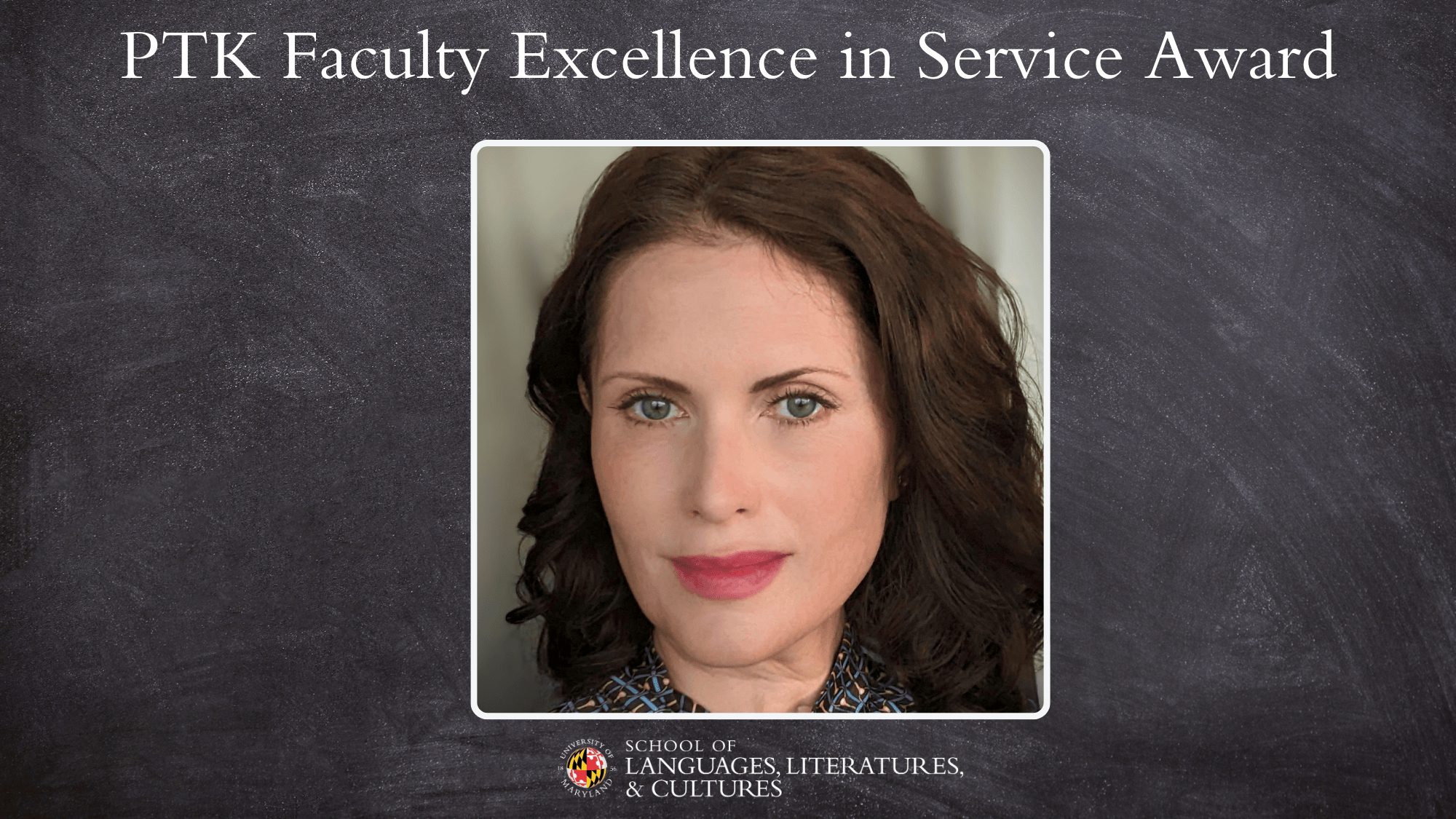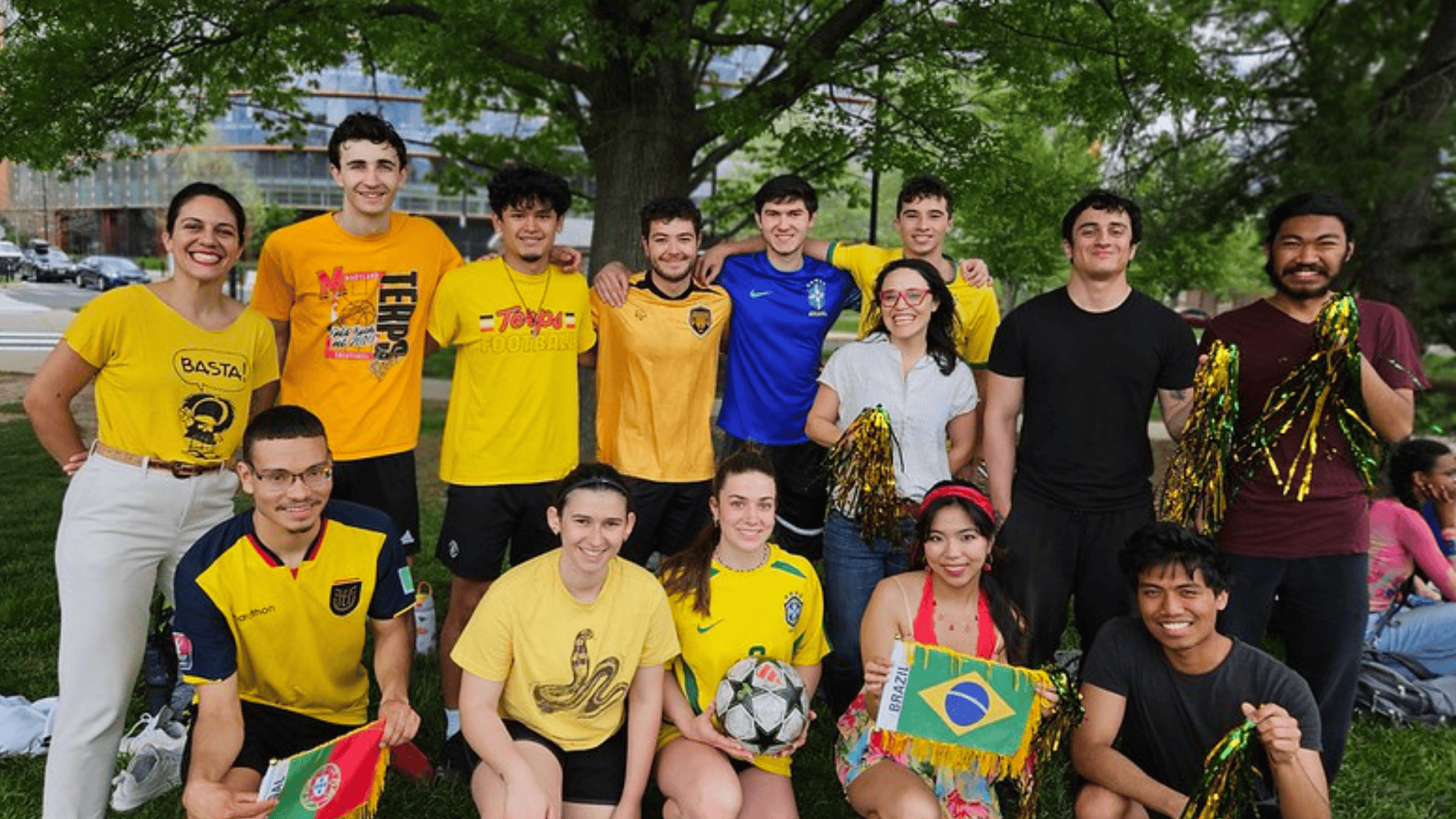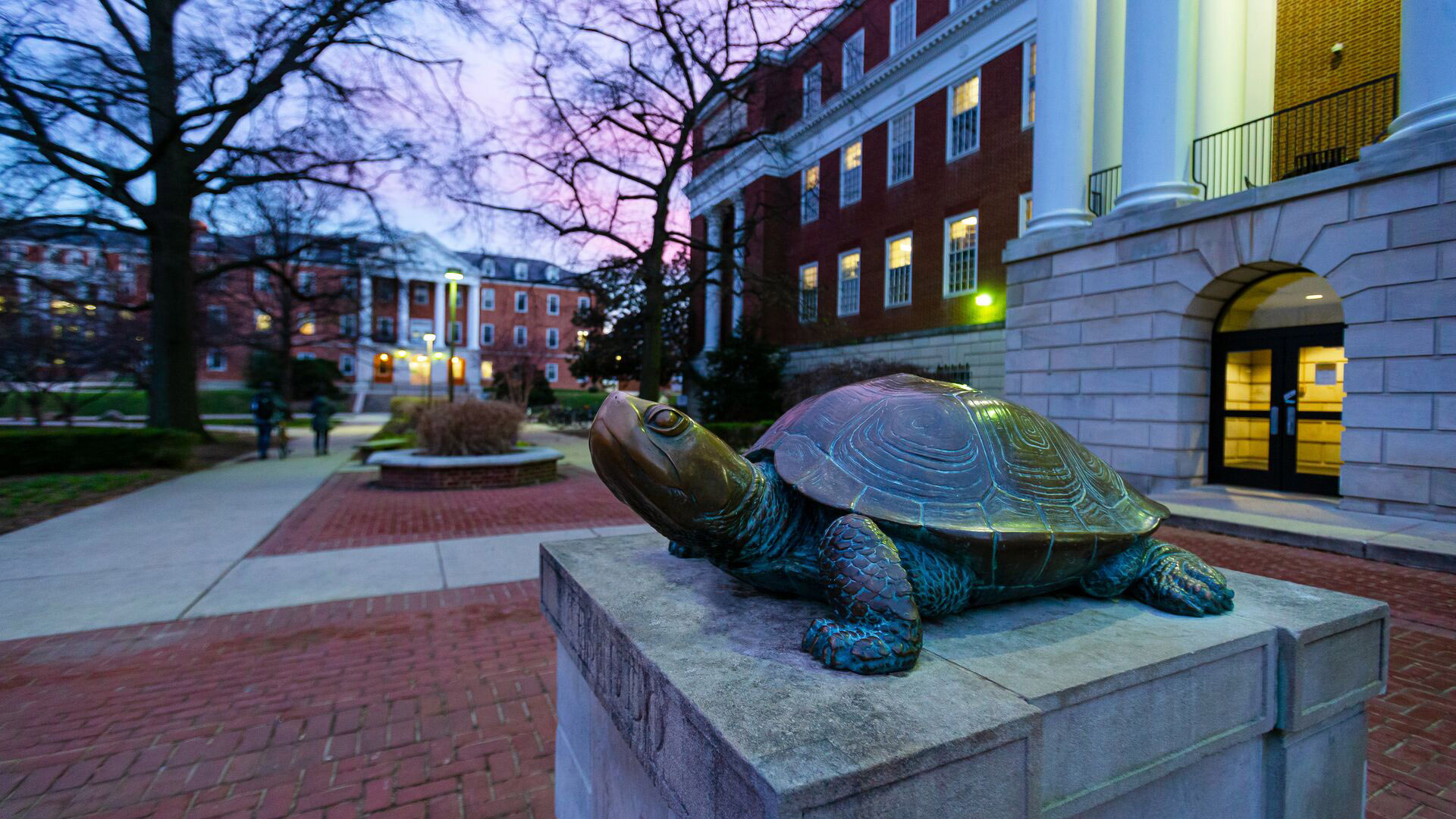University of Maryland School of Languages, Literatures, and Cultures Home
Welcome to the School of Languages, Literatures, and Cultures in the College of Arts and Humanities at the University of Maryland, College Park.
We invite you to learn more about our languages and programs, our undergraduate and graduate degrees and our special programs like the Language House Living-Learning Program, the Language Partner Program, the Persian Flagship Program, Project GO and the Summer Language Institutes.
About Us
Undergraduate Programs
Undergraduate Programs
The School is a transdisciplinary teaching and research unit. Our students, faculty, and staff investigate and engage with the linguistic, cultural, cinematic, and literary worlds of speakers of Arabic, Chinese, French, German, Hebrew, Italian, Japanese, Korean, Persian, Portuguese, Russian, and Spanish, as well as Cinema and Media Studies.
Graduate Programs
Graduate Programs
The School of Languages, Literatures, and Cultures offers three Ph.D. programs, four M.A. programs and an advanced graduate certificate in Second Language Acquisition. Our students pursue successful careers in academia, the government, secondary education and the private sector.
Graduate ProgramsFaculty and Staff
Alumni
Alumni
Stay connected with SLLC as an alum by sharing news of your accomplishments, joining our newsletter, attending events and giving back.
Learn More About SLLC
News and Announcements View All News
Go Beyond the Classroom
Recent Research ActivitiesResearch and Innovation
Otro cancel para Rosetta. España y el español en la temprana modernidad de los Estados Unidos
Another chisel for Rosetta. Spain and Spanish Language in Early Modern United States
Author/Lead: Carmen Benito-Vessels“Another chisel for Rosetta. Spain and Spanish Language in Early Modern United States”, thoroughly documents that the history of Early Modern North America is strongly linked to late medieval and Early modern Spain’s literary, architectural and linguistic traditions. Benito-Vessels articulate a new beginning for the narrative of how Native American lands and histories became European lands and history in the 16th century. She brings to light the history of the first Native American bilingual speakers of the Spanish and Algonquian Languages. The author also documents the first steps of 16th-17th century Spanish Language on the East Coast of the United States through cartography, administrative forms, missionary catechisms and oral narratives (as transcribed by the most famous humanist of his times, Pedro Martir de Anglería, and a revered historian of the New World: Gonzalo Fernández de Oviedo). The language used by Miguel de Cervantes in Don Quixote by Miguel de Cervantes belongs to the same bracket period.
Benito Vessels proves that The Florida Poem by Alonso Gregorio de Escobedo (1599) is a Bridge Between the Castilian Middle Ages and the Early New World Modernity. Finally, in this book, Carmen Benito-Vessels contributes a new perspective to the “Neo-medievalism” field of study by focusing on: the “antiquities topoi,” the lineage tradition in US society, literary works such as A Connecticut Yankee in King Arthur’s Court (1889) by Mark Twain, and the architectural replicas of Gothic buildings and the so-called Romanesque renderings.
From lab to web: Replicating cross-language translation priming asymmetry in an online environment
Cross-language translation priming, Online experimentation, Second language psycholinguistics, Lexical decision task, Reaction time
Author/Lead: Zhiyi Wu, Mireia Toda CosiIn second language (L2) acquisition research, understanding how learners process words across languages is crucial, with the translation priming paradigm consistently revealing that an L2 word can be processed significantly faster after a brief presentation of its translation equivalent in one’s first language (L1) but not vice versa. This study attempted to replicate Chen et al.’s (2014) investigation of translation priming asymmetry with Chinese-English bilinguals in an online environment using the Naodao crowdsourcing platform. We conducted three masked priming lexical decision experiments: two testing L1-to-L2 and L2-to-L1 priming with a 50-ms prime duration, and one examining L2-to-L1 priming with an extended 250-ms prime duration. Results showed that the classic asymmetry pattern was not fully reproducible in this online setting at 50-ms prime duration, with null effects in both directions. However, significant priming effects emerged with the extended prime presentation in the L2-to-L1 direction. These findings suggest that online implementation of timing-sensitive paradigms may require methodological adaptations.
Modeling relationships between learning conditions, processes, and outcomes: An introduction to mediation analysis in SLA research.
We offer a step-by-step, contextualized tutorial on the practical application of mediation analysis in three different research scenarios, each addressing a different research design using either simulated or open-source datasets.
Author/Lead: Ruirui Jia, Bronson HuiIn the past decade, researchers have been increasingly interested in understanding the process of language learning, in addition to the effect of instructional interventions on L2 performance gains (i.e., learning products). One goal of such investigations is to reveal the interplay between learning conditions, processes, and outcomes where, for example, certain conditions can promote attention to the learning targets, which in turn facilitates learning. However, the statistical modeling approach taken often does not align with the conceptualization of the complex relationships between these variables. Thus, in this paper, we introduce mediation analysis to SLA research. We offer a step-by-step, contextualized tutorial on the practical application of mediation analysis in three different research scenarios, each addressing a different research design using either simulated or open-source datasets. Our overall goal is to promote the use of statistical techniques that are consistent with the theorization of language learning processes as mediators.
Land Acknowledgement
Every community owes its existence and strength to the generations before them, around the world, who contributed their hopes, dreams, and energy into making the history that led to this moment.
Truth and acknowledgement are critical in building mutual respect and connections across all barriers of heritage and difference.
So, we acknowledge the truth that is often buried: We are on the ancestral lands of the Piscataway People, who are the ancestral stewards of this sacred land. It is their historical responsibility to advocate for the four-legged, the winged, those that crawl and those that swim. They remind us that clean air and pristine waterways are essential to all life.
This Land Acknowledgement is a vocal reminder for each of us as two-leggeds to ensure our physical environment is in better condition than what we inherited, for the health and prosperity of future generations.
Office of Diversity and Inclusion

